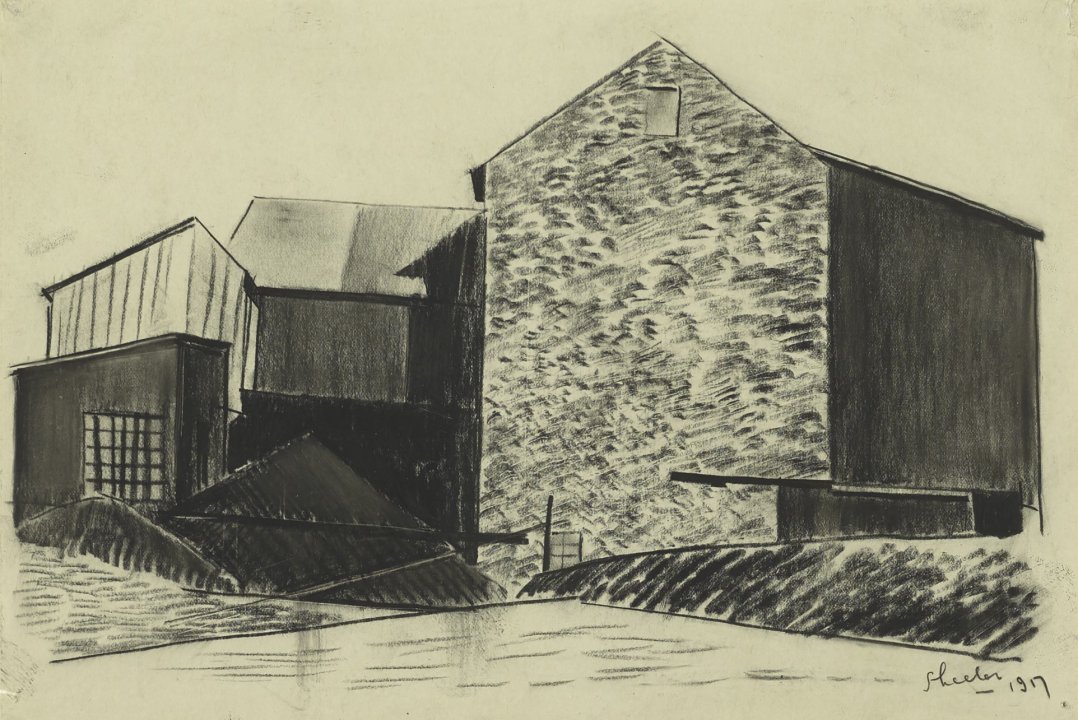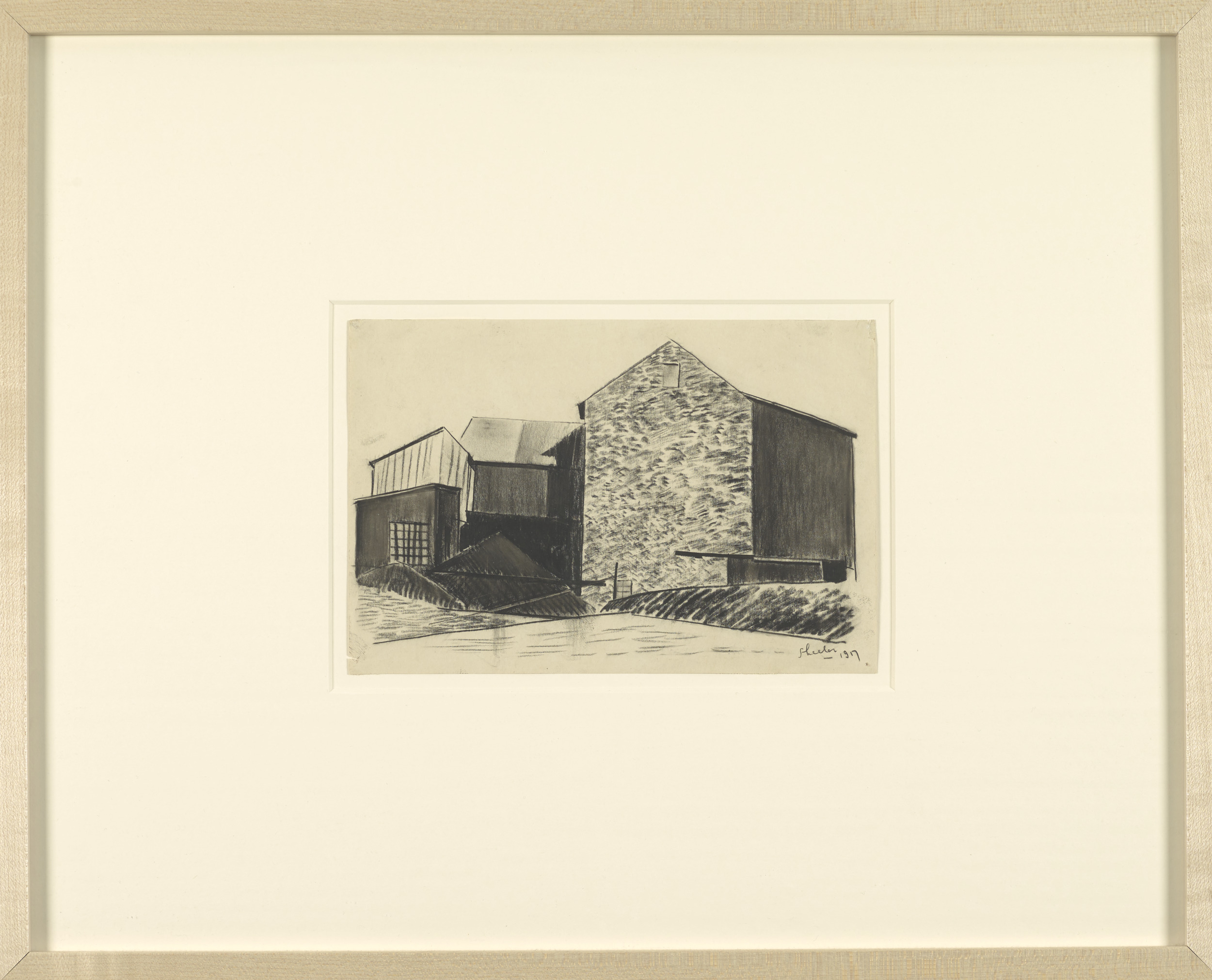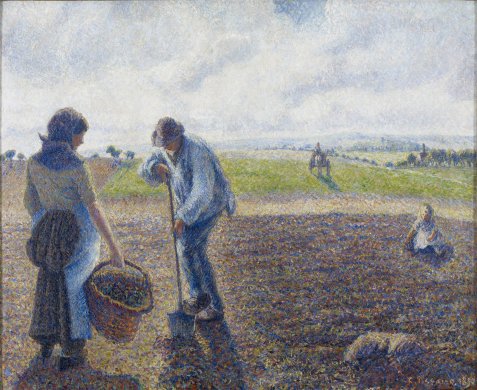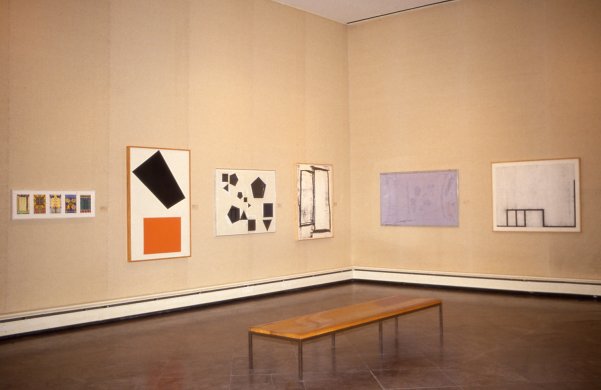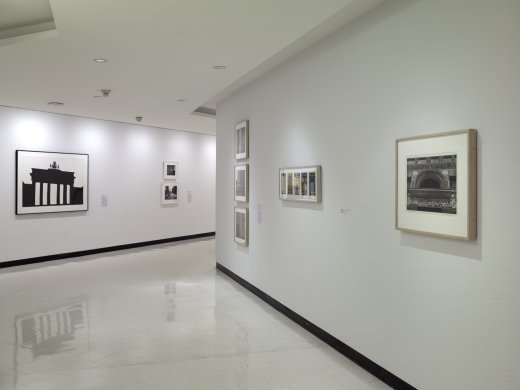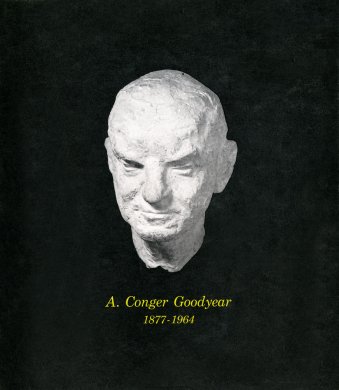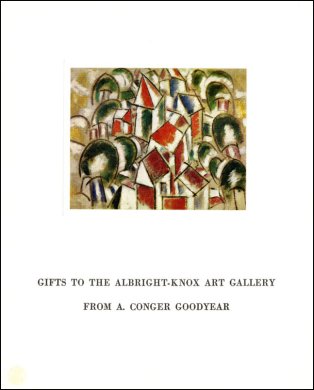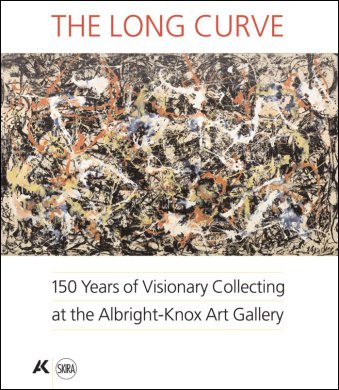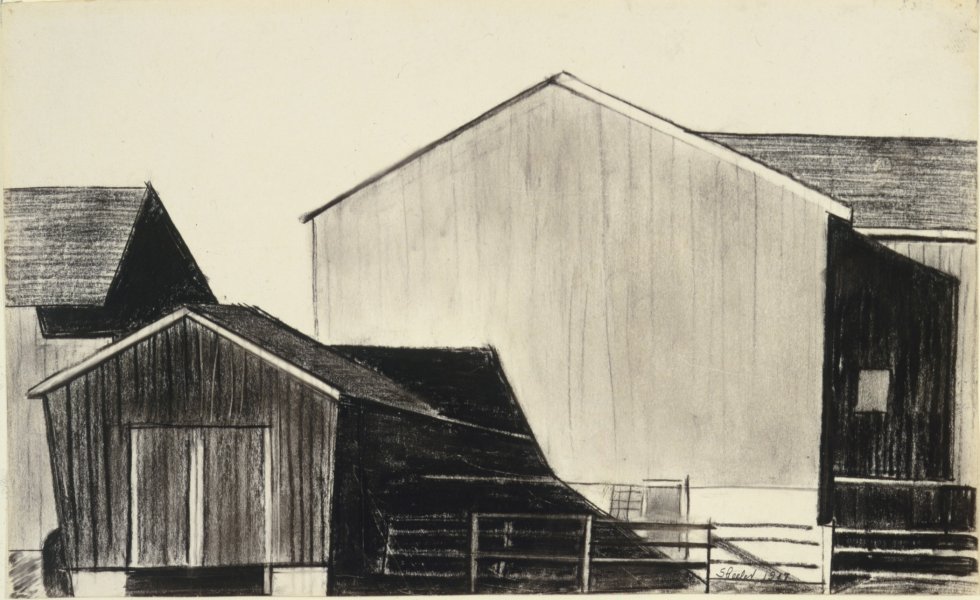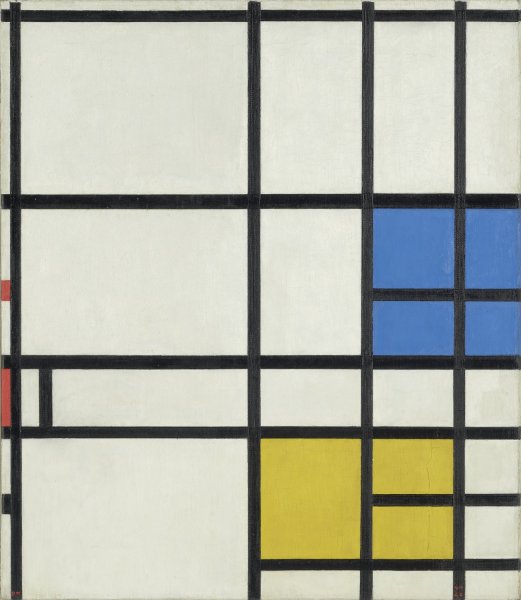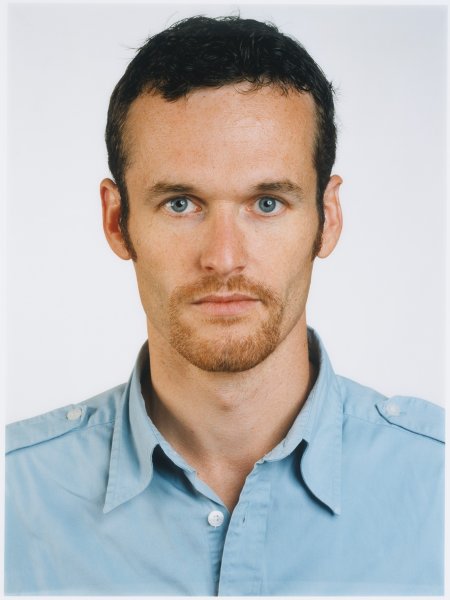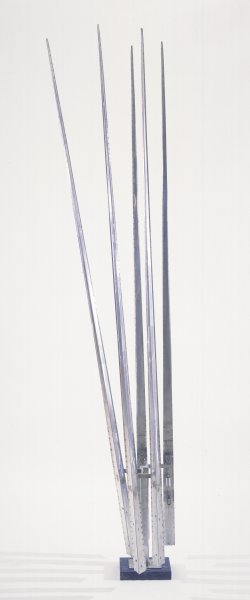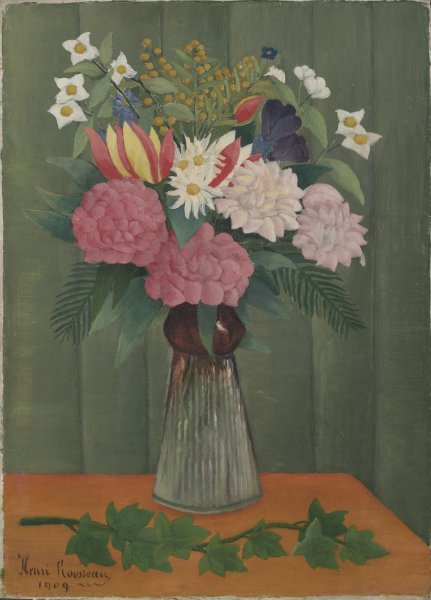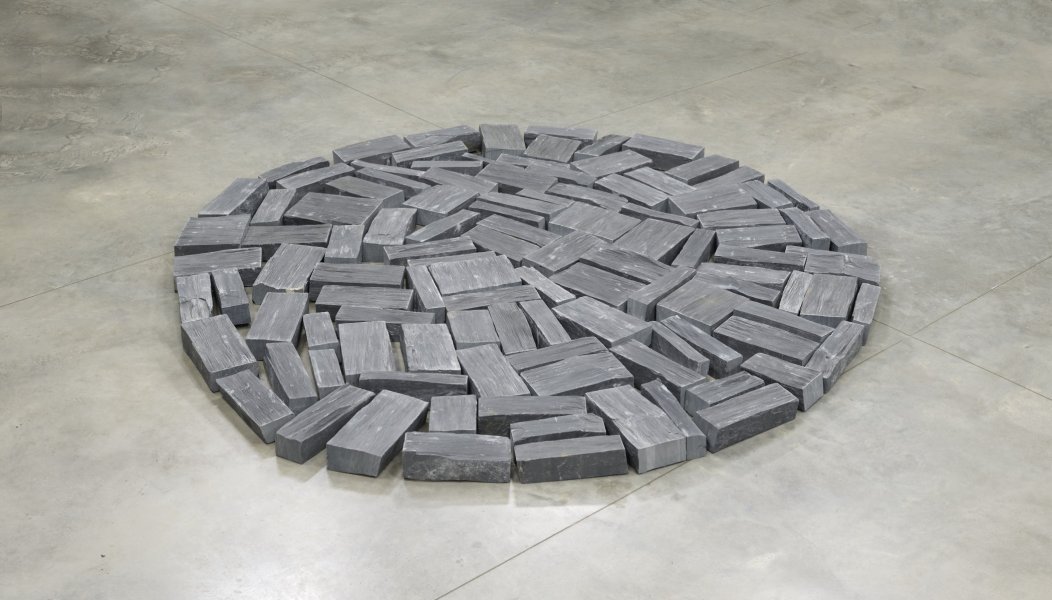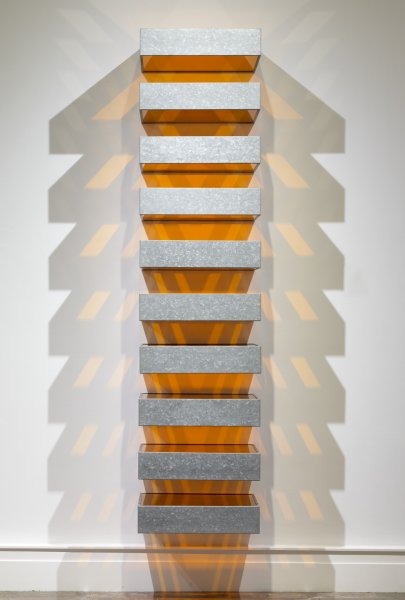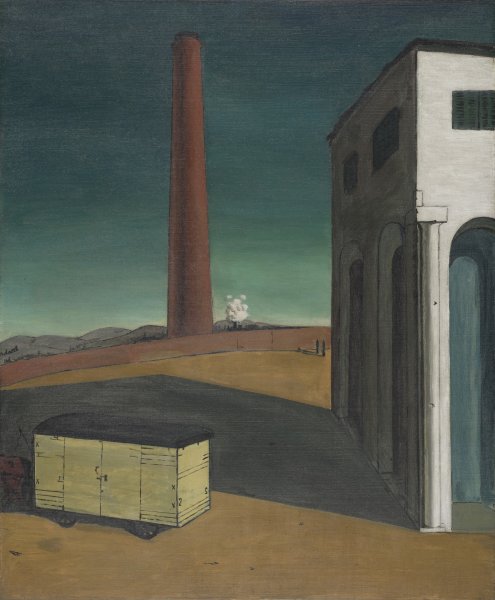Charles Sheeler
American, 1883-1965
Barns, 1917
Artwork Details
Materials
Conté crayon on paper
Measurements
sheet: 6 x 9 inches (15.24 x 22.86 cm); framed: 15 3/4 x 20 3/4 x 5/8 inches (40 x 52.7 x 1.59 cm)
Collection Buffalo AKG Art Museum
Credit
Gift of A. Conger Goodyear to Room of Contemporary Art, 1940
Accession ID
RCA1940:3J
Like many American artists before him, Charles Sheeler’s education included traveling to Europe. There, he became interested in paintings that flatten space, from medieval Italian altarpieces to the new Cubist works by Pablo Picasso and Georges Braque. Settling back in Pennsylvania in 1910, he began experimenting with abstraction in both painting and photography, eventually becoming one of the leaders of Precisionism in the 1920s. Artists associated with this movement characteristically transformed their subjects into sharply outlined, simple geometric shapes rendered in smooth paint, creating a visual analogue of the industrial machines, factories, and products that defined the period. Although the wooden barn here evokes a pre-industrial era, for Sheeler, barns exemplified the modernist belief that even functional objects have aesthetic value. “The[ir builders] weren’t building a work of art. . . . If it’s beautiful to some of us afterward, it’s beautiful because it functioned,” he later noted. Transposing the barn’s “beautiful” structure onto his paper’s two-dimensional surface posed a problem that Sheeler solved by flattening the barn into a series of polygons, anticipating the more geometric images of buildings made by later artists.
Label from Window to Wall: Art from Architecture, November 18, 2017–March 18, 2018
